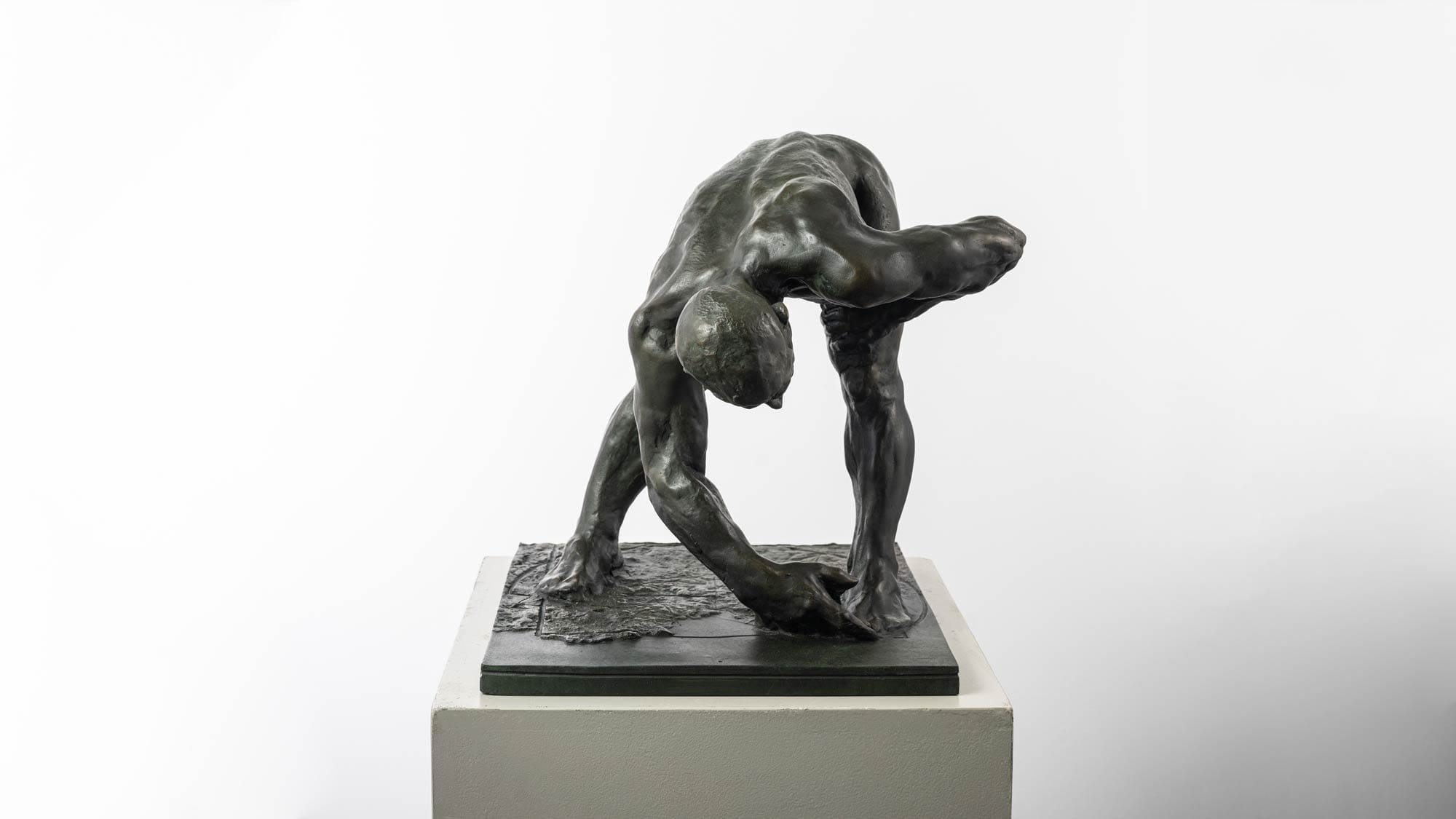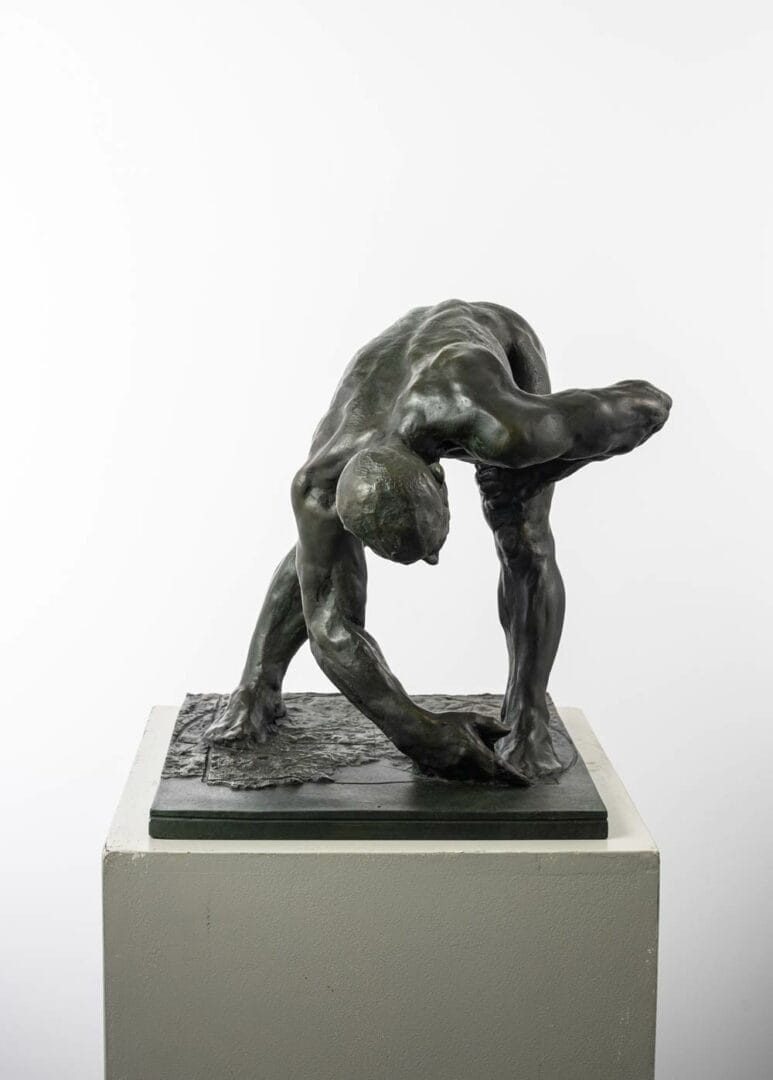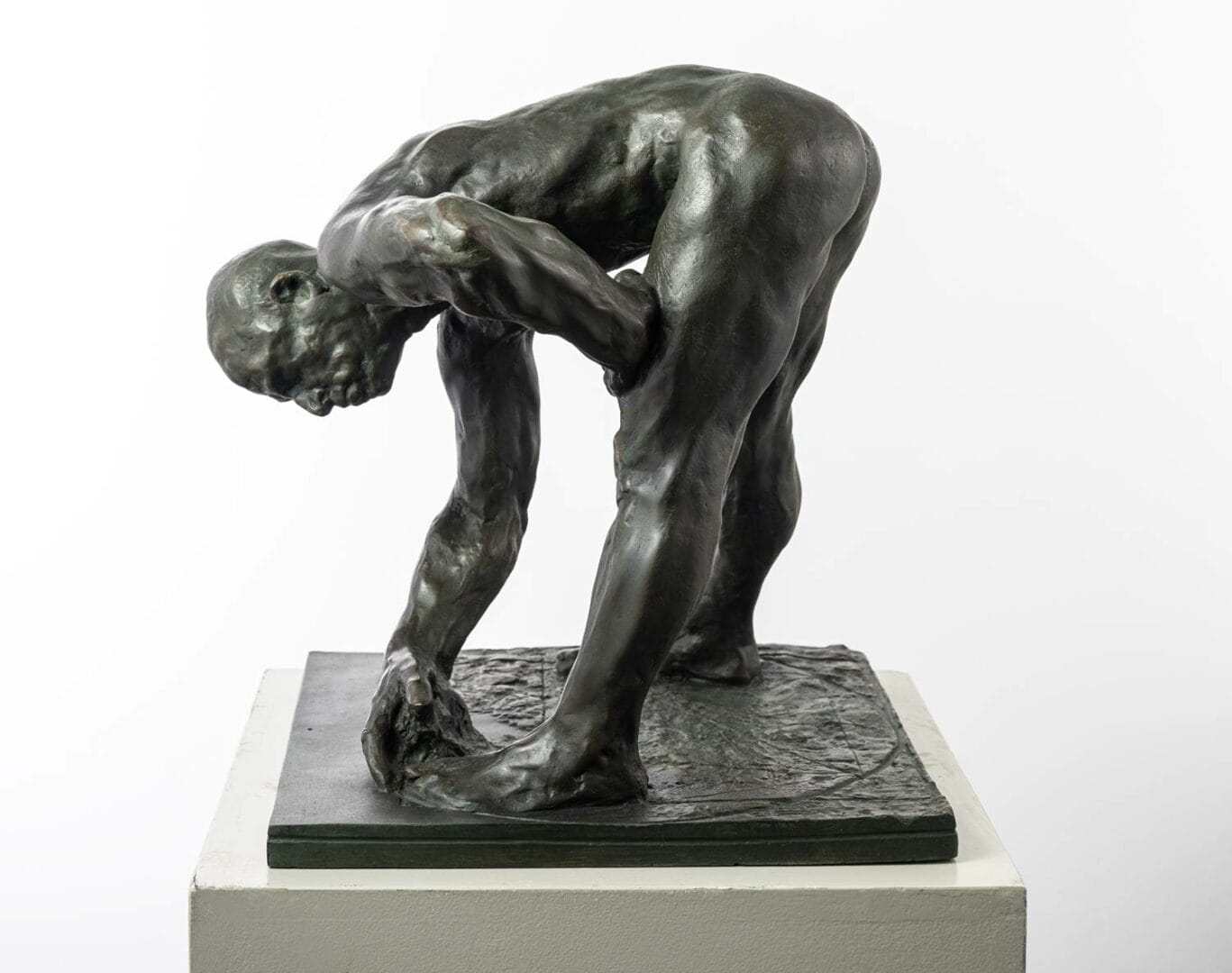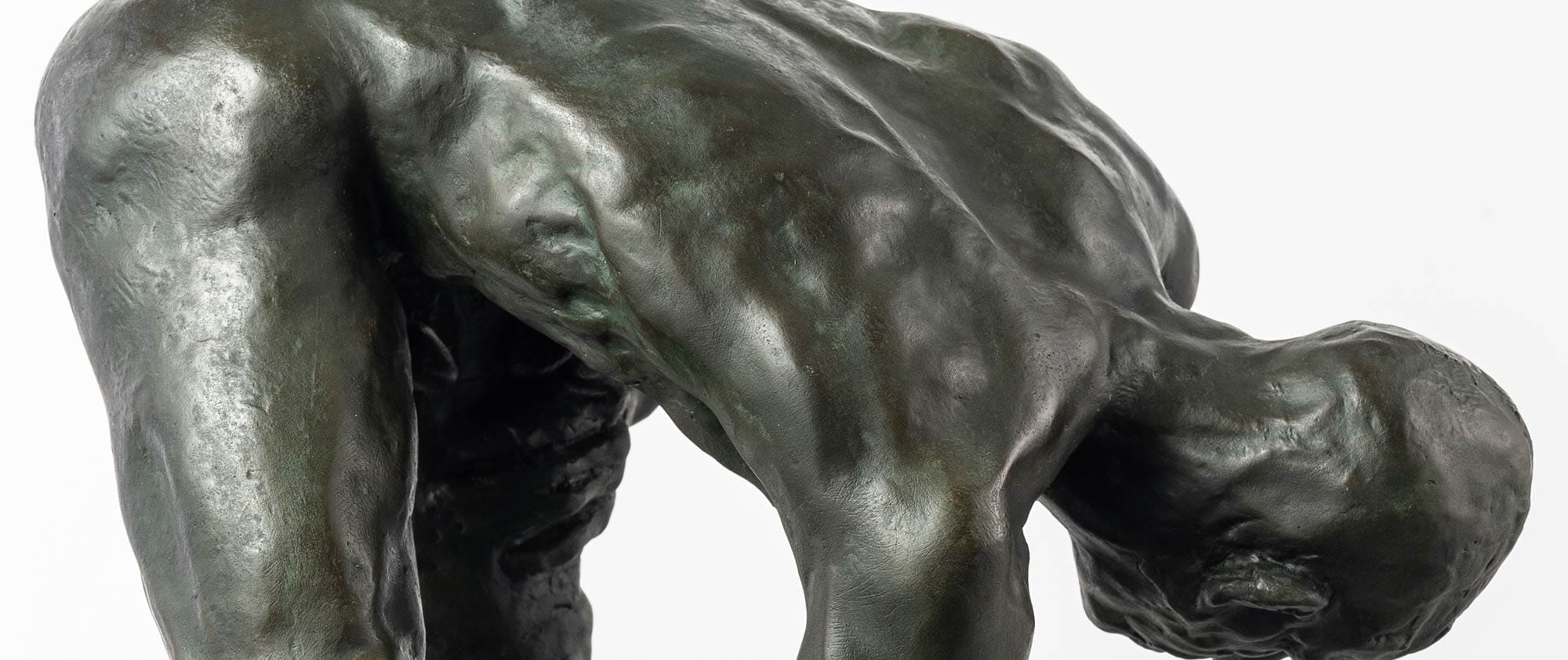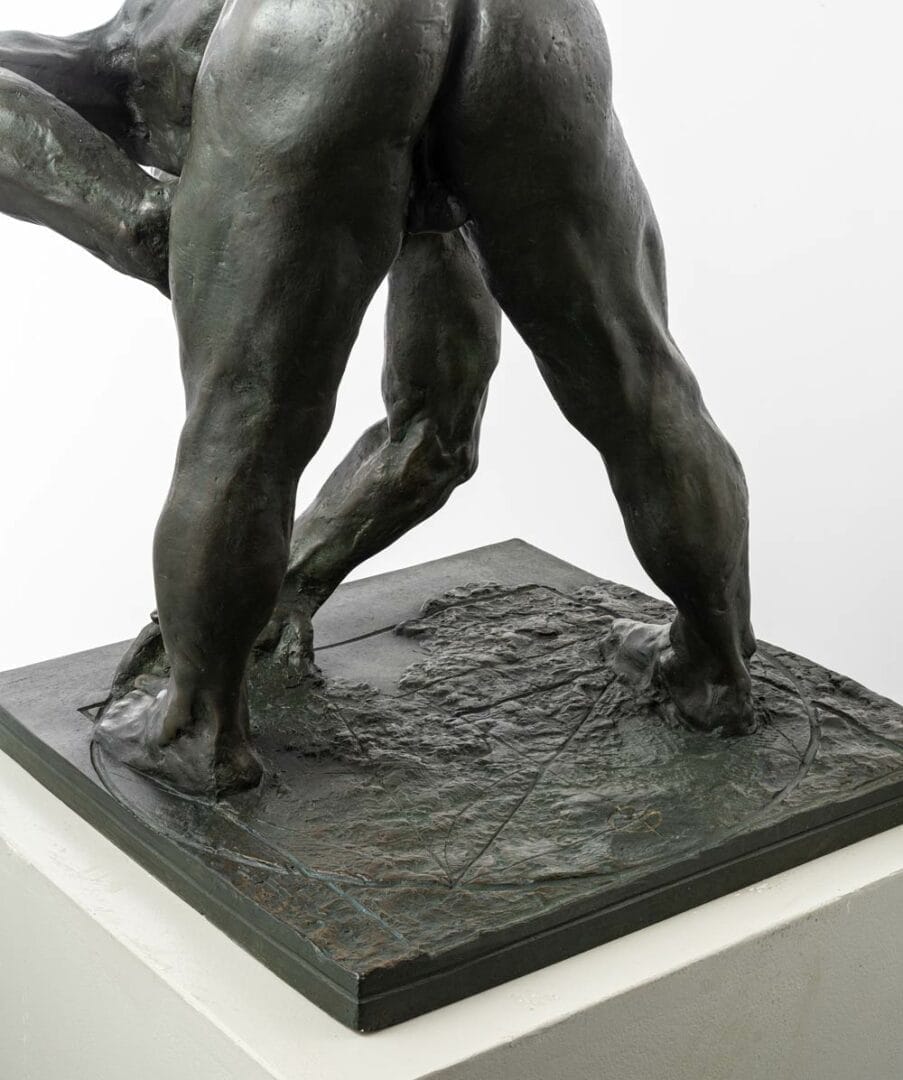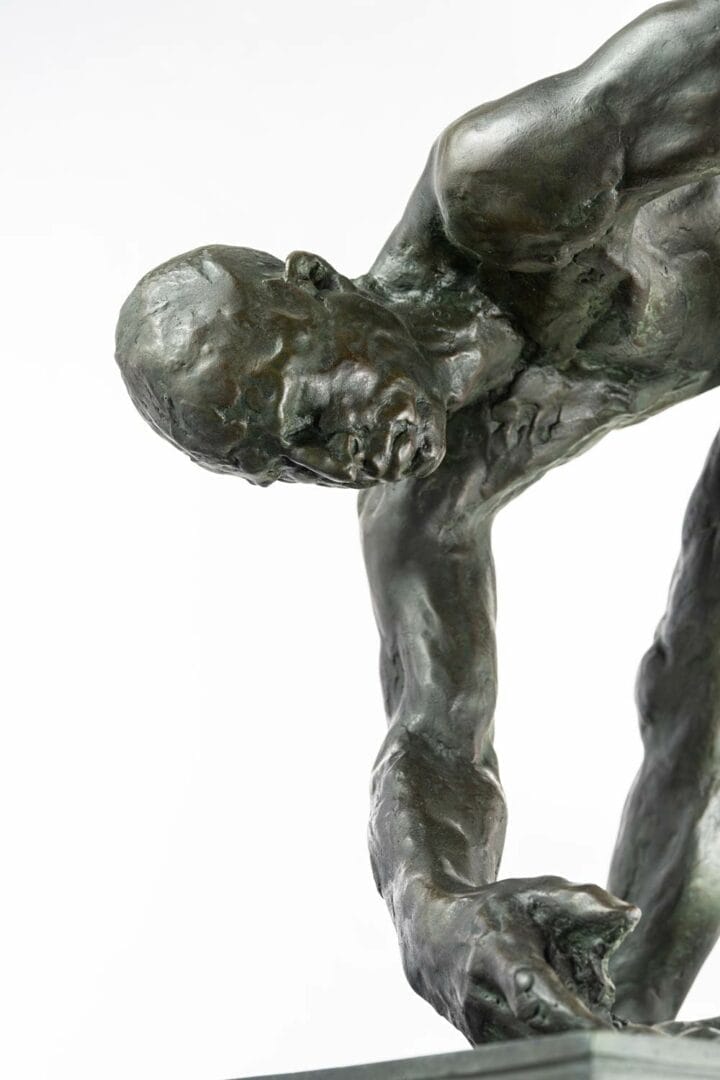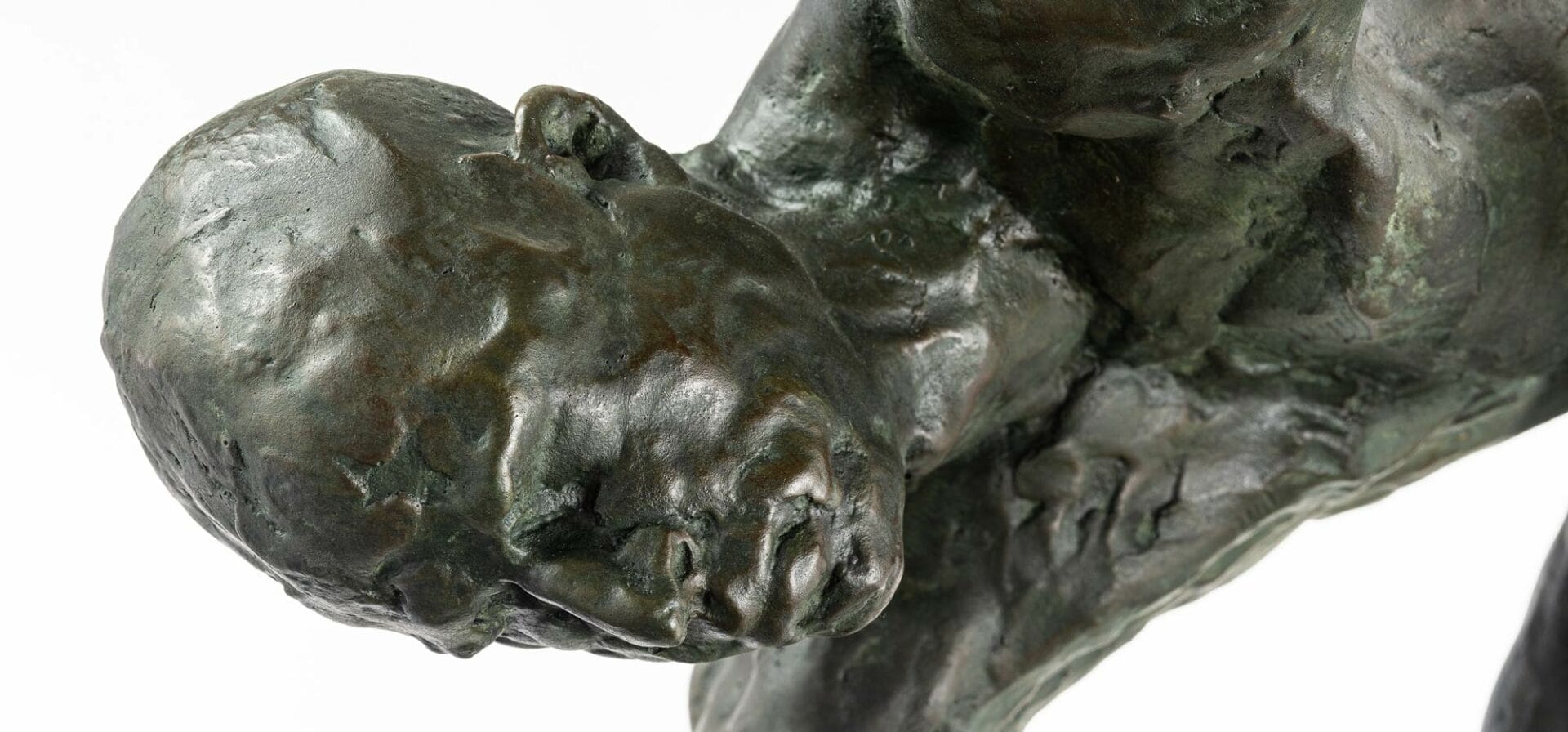Guy Le Perse
The architect – Male nude – Bronze sculpture
Guy Le Perse
The Architect
Date : c. XXI
Dimensions : H : 39 cm ; L : 41 cm ; P : 39,5 cm
place of production: Lille
Material : Bronze patina
Conditions & disponibilité: Original work produced in 8 numbered copies plus 4 for artist. A certificate of authenticity signed by the artist is provided to the purchaser - copy still available.
14 000 €
The purchase of this item cannot be completed online
Description
of work
Bronze statue of a naked man drawing on the floor
Firmly planted on his legs, with a sweeping gesture of his hand, a naked, muscular man draws a circle on the ground. His face is firm and determined, his hand doesn’t tremble and the gesture seems perfect. Previously, a square had been drawn in the ground. Without compass or ruler, is he trying to square the circle? Is he doing the impossible?
This man, who looks like a hard-working peasant sowing his seed, is none other than the Architect, the Geometrician, the Creator. From his drawing hand, matter is born and spread. The base of this sculpture, partly empty and cold, seems gradually to be covered with rich earth, ready to be sown.
By tracing these lines in the ground, the architect creates a boundary, a separation. That between darkness and light, heaven and earth, nothingness and creation.
This is how the Architect creates and orders the world.
First, he draws the square and places his foot on it. The square, the symbol of stability, is also the symbol of the organisation of matter, that of the Earth. By drawing a square, the Architect separates the elements, provides orientation and structures Chaos.
Then our Geometer draws a circle in which he stands. The circle, the figure of perfection, has neither beginning nor end, neither orientation nor direction. A spiritual symbol par excellence, the circle represents Heaven.
These two symbols, the circle and the square, are symbolically opposites. It is impossible to transform a square into a circle of the same area using a ruler and a compass, in other words by purely geometric means. Squaring the circle is an insoluble problem for man, and his efforts to solve it will be in vain.
Only the Architect can accomplish it.

"What could be more obvious and clear, once we have looked up at the heavens and contemplated the heavenly bodies, than the existence of a divinity of absolutely superior intelligence who regulates their movements? [...] He is, as it were, the architect of such a great work and watches over its upkeep." Cicéron - De natura deorum, book II,2

Guy Le Perse
Roubaix (France) 1953
Sculptor Guy Le Perse trained at the École Nationale Supérieure des Arts et Industries Textiles in Roubaix and the École des Beaux-Arts in Douai. Guy Le Perse’s masters were the sculptor Armand DEBEVE, whose model he used for some of his works, and the painter and engraver Auguste-Jean GAUDIN. From his masters, he drew a very high personal standard in the mastery of gesture and in the realization of his works.
A complete and expert artist, mastering both burin engraving and painting, Guy Le Perse worked for many years for a number of prestigious clients. While practicing sculpture as a personal and secret philosophy, Guy Le Perse taught at schools of applied art and fine art schools in northern France.
Shortly before the year 2000, Guy Le Perse decided to devote himself primarily to sculpture. Guy Le Perse has produced a powerful and profound figurative body of work in the great tradition of French statuary, one of the richest and most beautiful in the world.
Through his work, Guy Le Perse perpetuates the excellence of French sculpture, which illustrious artists such as Jean-Baptiste Carpeaux and Auguste Rodin have brought to the pinnacle, its rightful place.
Drawing on the foundations and mysteries of the human soul that the great myths and founding texts explain to us, Guy Le Perse has created a timeless work of great beauty, combining strength and delicacy.
Fiercely independent throughout his professional life, he is also independent with the times. Guy Le Perse’s sculptures do not follow fashions or trends ; they are timeless. With no concessions to the times, Guy Le Perse’s works speak of the human tragedy to the man of yesterday and to the man who will contemplate them a thousand years from now.
A demanding perfectionist, Guy Le Perse carries out the entire manufacturing process for his bronzes himself, apart from casting the bronze. Guy Le Perse’s mastery of model modelling, chasing and patination is equally exacting, and he accompanies his works right down to the smallest detail.
the work
in its context
With this patinated bronze, sculptor Guy Le Perse has created a work of great symbolic power.
Often a simple support needed to structure a work, the base of this sculpture is used here to convey a message. With a keen eye for detail and an in-depth knowledge of geometric symbolism, Le Perse offers us a powerful reinterpretation of the idea of the Architect, creator of the Earth and the Stars.
Often present in medieval art through illuminations or mosaics, God the creator of the universe is a figure of Christian art and its alchemical tradition. Both geometrician and creator, Le Perse’s Architect allows us to stage the ancient idea of tracing in the ground as an archetypal and performative gesture. Creative and transcendent, the gesture of drawing in the ground has a profound and powerfully evocative ancestral symbolism.
The Augurs, the priests of ancient Greece, were responsible for marking out in the ground the location and boundaries of the temples dedicated to the gods. On the basis of various observations, such as the passage of birds in the sky, they literally cut out the sky and the earth with their lituus, a sacred stick, to determine a space dedicated to a temple and therefore to a god.

Similarly, in the Gospel according to John, in the passage about the adulterous woman, there is mention of a gesture by Christ that is surprising and unexpected, to say the least. As a crowd gathers to stone an adulteress, some of them ask Jesus about her fate. Strangely enough, Jesus bent down to the ground and wrote on it. A surprising gesture, to say the least, at a time when a crowd was preparing to put a woman to death in a public square. Questioned again, Christ stands up and declares that “he who is without sin casts the first stone”.
This strange gesture of writing in the ground is in fact a forerunner and preparatory gesture, that of a real revolution, a renewal of morality.
Finally, we can’t help but think of the gesture of the artist himself, the creator par excellence, who when he traces and draws brings a new universe into being.

